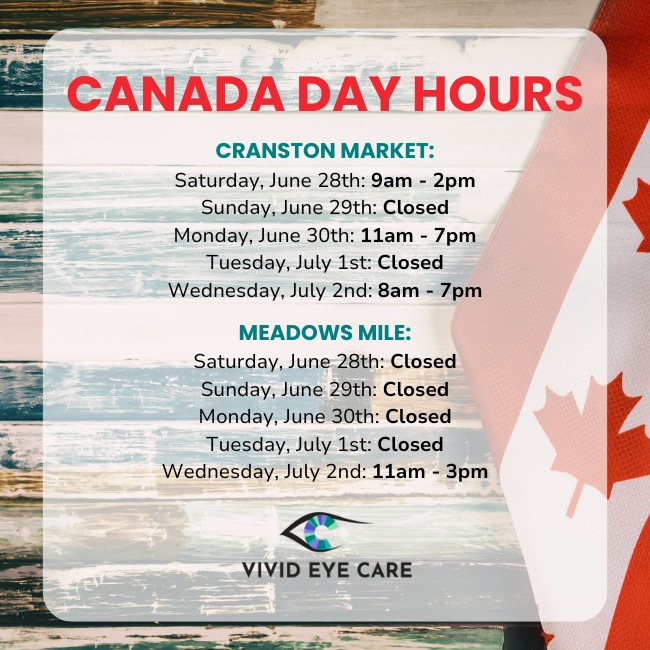As parents, we all want our children to be healthy and happy. Part of supporting their well-being is taking care of their vision. Children rely on their vision to learn and grow, but young children may be unable to tell us if they have vision problems, making regular eye exams crucial.
During a children’s eye exam, your child’s optometrist will test their vision and assess their eye muscles and general ocular health. These tests help determine if your child needs glasses or other treatments. These young years are full of changes, and common conditions like myopia can develop before school starts.
Why Eye Exams Are a Must for Kids
Children’s eye exams offer early detection of vision problems that can help prevent serious concerns in the future. And in this digital era where children are increasingly exposed to screens like TVs, computers, tablets, or smartphones, it’s even more crucial to consider their eyes.
A growing body of evidence tying excessive screen time to myopia (nearsightedness). Myopia makes distant vision blurry, but regular eye exams allow your optometrist to monitor your child’s vision and prescribe glasses or contact lenses as needed—even as your little one’s vision evolves.
Myopia can increase your child’s risk of developing serious eye conditions. There is no safe level of myopia. Your optometrist can also recommend myopia control options to slow its progression.
The Connection Between Vision & Learning
Children with undetected vision problems can also experience difficulties at school. The reason may be obvious: It’s tough to absorb knowledge or focus on schoolwork when you can’t see properly.
Children who can’t see the whiteboard can miss out on vital information, leading to lower grades and understandable frustration. In some cases, they may be misdiagnosed with ADHD.
During an eye exam, your optometrist can guide you on how to help your child navigate these challenges.
When Should Children Have Their First Eye Exam?
We recommend children have their first eye exam between 6–9 months of age. This is about when their eyes have developed enough that we can start looking for warning signs of vision or eye health problems.
Children’s eyes grow quickly, and problems can arise from nowhere. So, many optometrists recommend children have an eye exam every year to monitor their visual development.
Signs of Early Childhood Vision Problems
Look out for these signs that it might be time to book a comprehensive eye exam for your kid:
- Squinting, eye rubbing, or blinking excessively
- Light sensitivity
- Easily frustrated or distracted
- Regularly covering or closing one eye, especially when reading
- Holding objects close to the face when reading
- An eye turned either in or out
- Itchy, red, or watery eyes
- Avoids reading or watching television
The Lowdown on Children’s Eye Exams
Despite the eye’s seemingly simple shape, they’re complex organs. Vision problems can be elusive, often creeping up with subtle symptoms that can easily slip under the radar. But standard eye tests can help your optometrist uncover any problems.
Pre-Exam Questions & Simple Tests
Before the eye exam, your optometrist will ask basic questions about your child’s health history and any vision problems they might be experiencing. We may also test your child’s basic vision and colour perception using a chart. If your child doesn’t know their letters yet, that’s okay! We can also use shapes or other methods to test their eyesight.
For the younger kids, we try to make these tests fun so they stay engaged. The first eye exam can be intimidating, so employing various objects or games can keep the adventure light-hearted.

Examining Eye Health
After the preliminary tests, we’ll carry out a thorough eye health exam. There are lots of structures inside the eye, and we need to check them all for signs of disease or damage.
Eye Muscle Testing
We may also assess your child’s eye muscles to see if they function correctly. This includes checking how their eyes move, focus, and track objects as a pair.
Infants are at risk of developing strabismus (crossed eyes) or amblyopia (lazy eye). The earlier we detect and treat these conditions, the more successful treatment usually is.
Refraction Testing
If your optometrist thinks your child may need glasses, they perform a refraction test. A refraction test determines what prescription strength your child needs to correct their vision problem.
It’s performed by having your child use a device called a phoropter. This is the very recognizable machine that cycles through lenses. We’ll ask your child which lens they think gives them the clearest vision. If your child isn’t talking yet, we can use a computerized test that shines light into the eye and calculates the reflection to get an accurate prescription.
We’ll make sure to personalize the experience for your child to make this a fun experience!
Schedule Your Kid’s Eye Exam in Calgary Today
Our team at Vivid Eye Care is excited to support your child’s visual health. Make eye health a priority and book your child’s eye exam today!






















